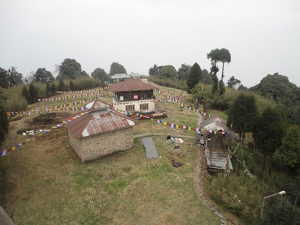On August 4, the Sikkim Lepcha Association issued a statement which indicated that the ancient festival of Tendong Lho Rum Faat will not be celebrated this year with its normal festivities due to the recent upsurge in the COVID 19 pandemic. Instead of the usual activities in Lepcha communities around the state, the organizers asked the people to celebrate in their homes—on August 8th, the date of the celebration each year.

The popular holiday commemorates a very important Lepcha myth. In ancient times, the people believe, they were threatened by rising waters caused by a deluge that lasted 40 days and 40 nights. And probably no one thought about Noah and his ark much less global climate change. But a local hill named Tendong invited the Lepchas to climb up and seek shelter from the flood. The people show their continuing gratitude each year to the hill through their festivities.
In a statement issued on the 8th, the Chief Minister of Sikkim, P.S. Tamang, extended his best wishes to the people of his state for the celebration of Tendong Lho Rum Faat which, he said, “symbolizes the tradition of living in harmony with Mother Earth.” He appealed to the people of the state to maintain their faith in the deities, which should protect them from all hardships.
Mount Tendong is located near Namchi, in South Sikkim. The Tendong Gumpa (Monastery) at the top of the hill is a major location for celebrations each August. The program normally begins with prayers addressed to the hill conducted by a high priest, called a bongthing.
Many Lepchas believe that the prehistoric flood was caused by a dormant volcano, the eruption of which prompted the deluge. Mt. Tendong arose miraculously out of the chaos and the Lepchas were able to climb it and save themselves. The people commemorate the myth in many of their villages, especially at Tendong itself, expressing their gratitude toward the deity who saved them. The people make models of the holy mountain for the facades of their homes for the occasion. They believe that the beneficence of the deity will help keep them healthy for the coming year.